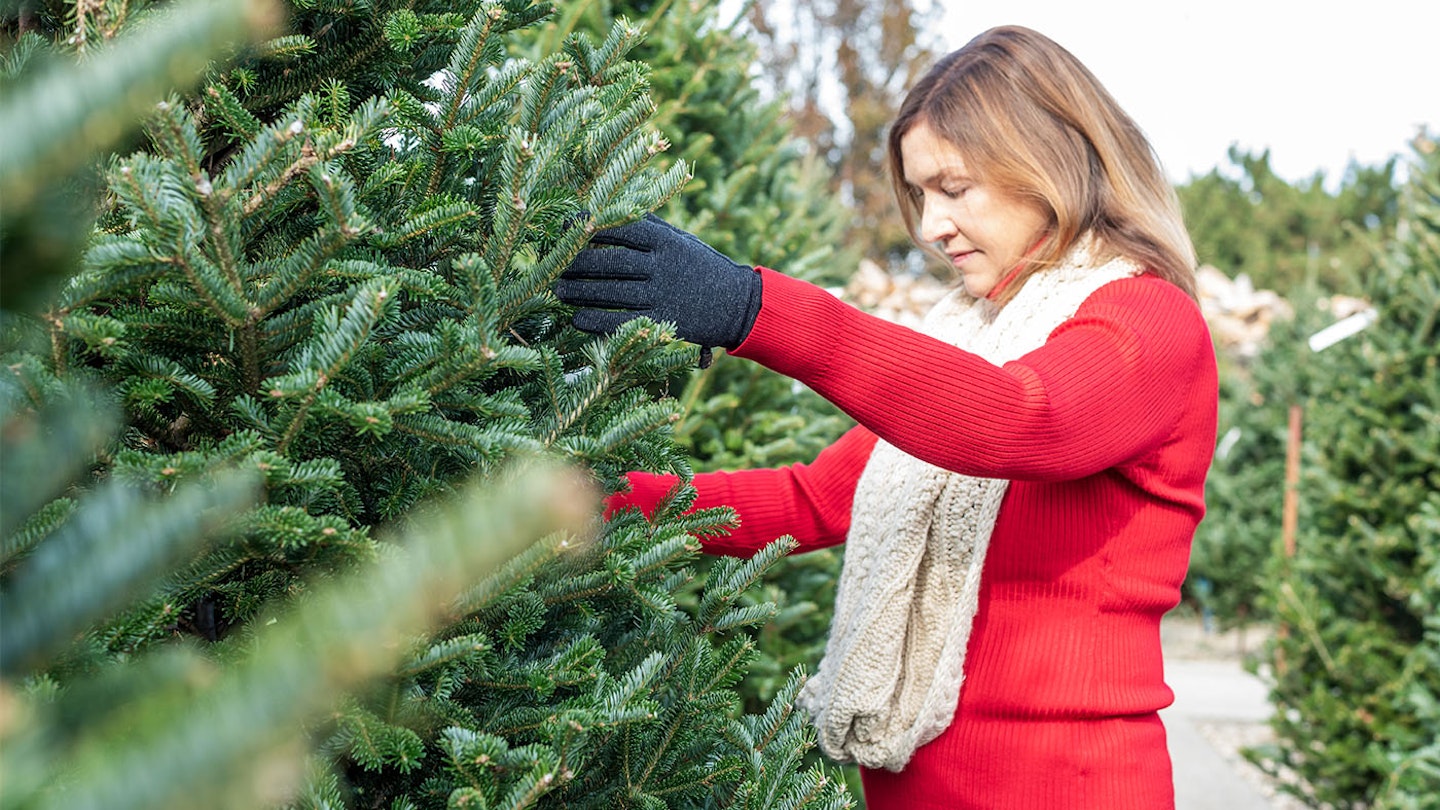The festive season is very nearly upon us and if you're thinking of purchasing a real tree this year rather than an alternative, it's worth getting clued up on the different types of Christmas trees and which could be the best one for your home. Mark Rofe from christmastrees.co.uk explains everything you need to know to help you select the perfect tree.
Types of Christmas trees
Nordmann Fir

The Nordmann fir is the UK’s most popular type of Christmas tree. Known as the ‘non-drop Christmas tree’ for its excellent needle-holding abilities, it has large and soft needles making it ideal for households with young children or pets, and strong branches suitable for hanging heavy ornaments or baubles.
The Nordmann fir is a conical tree, with strong bushy branches that grow in tiers and become progressively shorter towards the top, which gives it its beautifully symmetrical shape.
The needs of the Nordmann are shining and soft to touch, which makes it the ideal option for households with pets and small children. The fir is almost scentless, which is perfect for the more sensitive households.
Fraser Fir
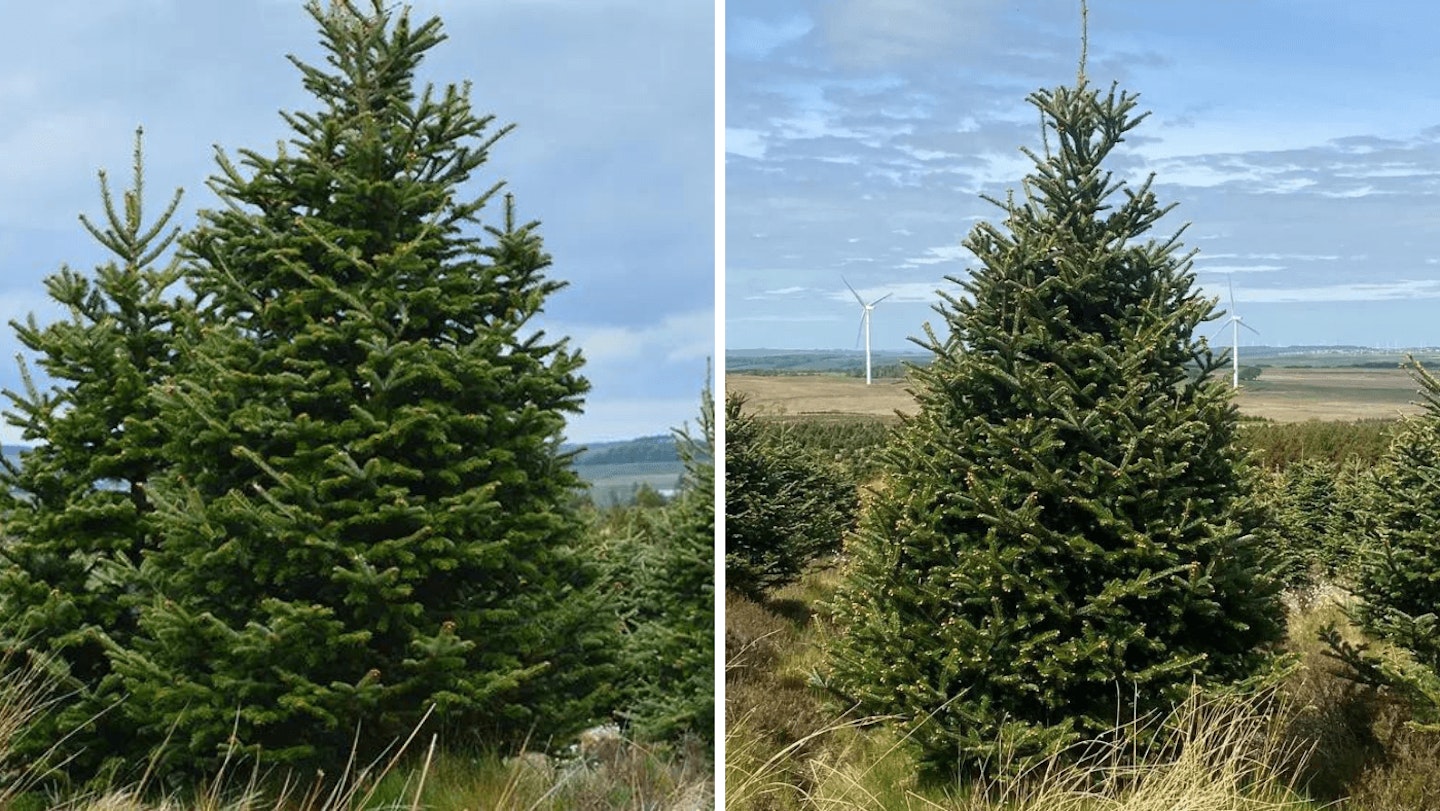
The Fraser is the perfect all-round Christmas tree with great needle-holding abilities, a zesty aroma that smells like Christmas, and beautiful dark green foliage with blue undertones. Its slim shape makes it ideal for homes with less space.
The Fraser has a typical pyramid shape with upward-pointing needles and strong branches to bear the weight of your most treasured baubles. It boasts perfect symmetry and bushy, dark green foliage with blue undertones.
The Fraser might be a relative newcomer to the British Christmas tree market, but across the Atlantic, it’s a bestseller. It even has the Presidential seal of approval – the Fraser is often chosen as the official Christmas tree of the White House.
Korean Fir
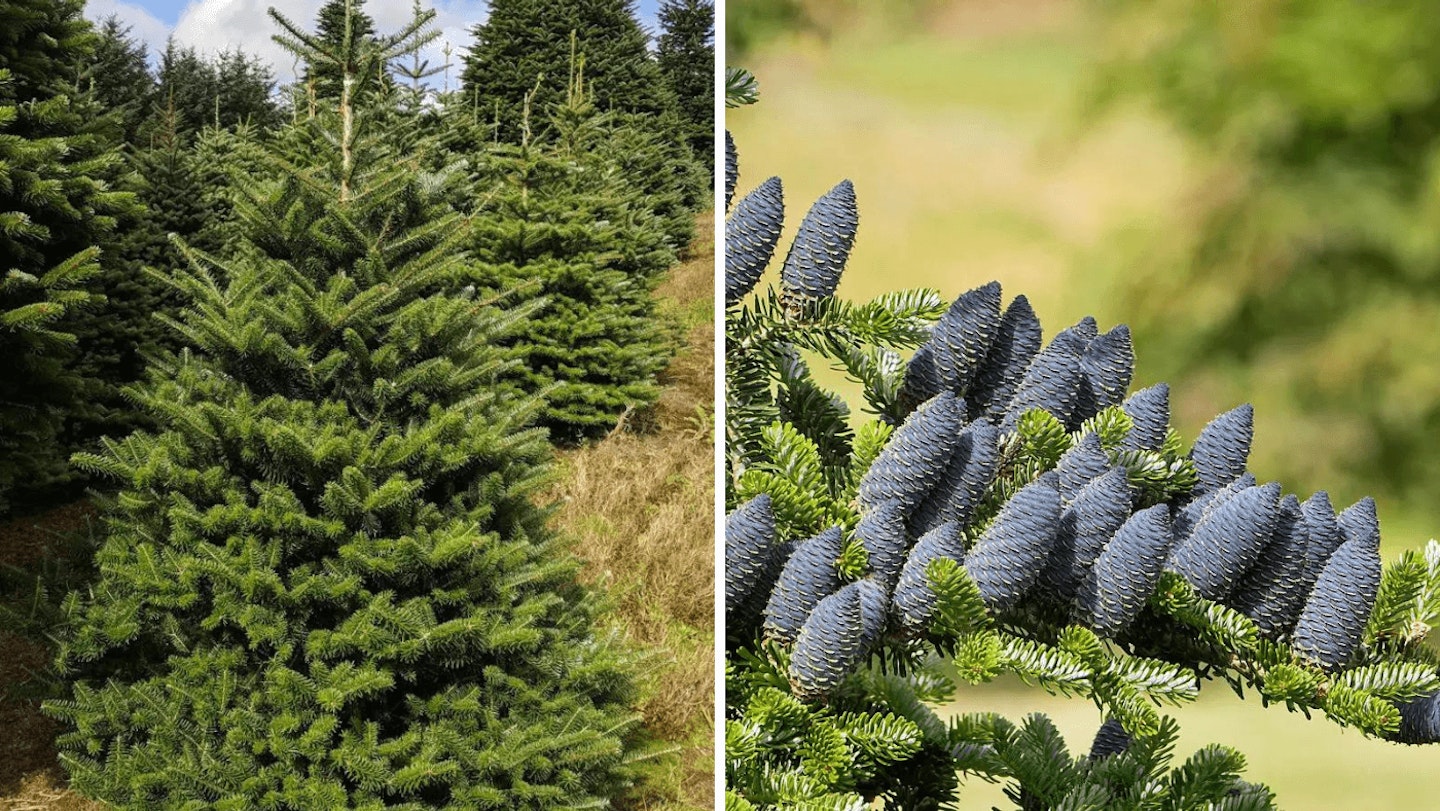
An exotic, luscious green Christmas tree that is relatively rare in the UK, the Korean Fir is the ideal tree for the home that’s looking for something special and just a little different. Occasionally, the Korean will even come with striking indigo cones on its branches.
The Korean Fir is astonishingly beautiful — bushy, mid-green foliage gives way to silvery blue undersides. This causes the needles to appear shimmery, with an upward curl ideal for hanging delicate decorations. The wide, soft branches give the Korean a pyramid shape.
The needle retention of the Korean Fir is excellent, on par with the Nordmann Fir, and the softness is ideal for a busy home with children and pets. But the most distinct selling point of the Korean is its aroma: a fresh, forest scent that will be the highlight of your home.
The Blue Spruce
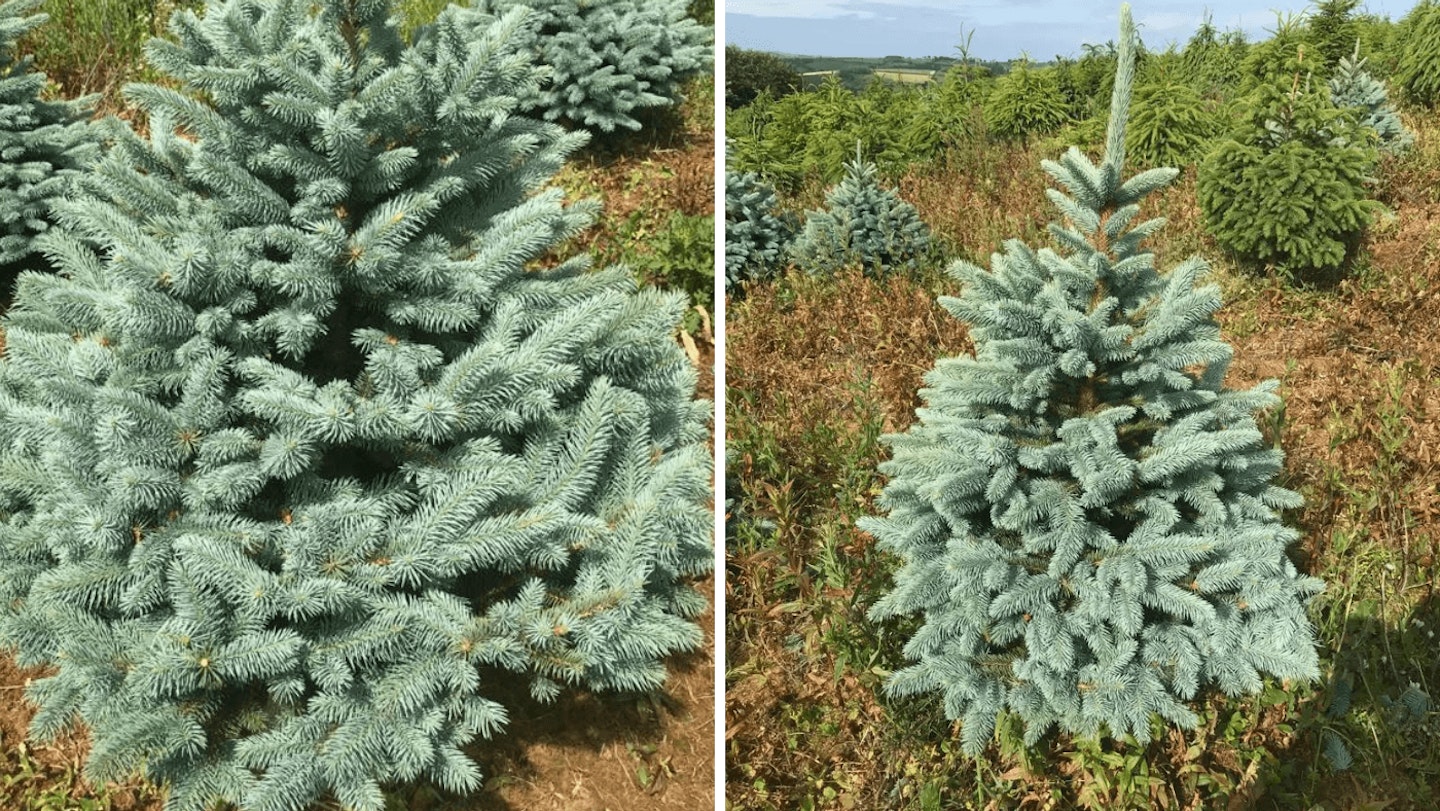
A visually stunning tree, the needles are covered in a silvery wax which gives it its striking blue colour. An ideal alternative to a more traditional Christmas tree, suitable for anyone that is looking for something a little bit different.
The Blue Spruce is conical in shape, and its slow growth provides the tree with densely packed branches, which are perfect to hang your Christmas decorations and ornaments.
The needles of the Blue Spruce are a magnificent, almost metallic-like blue, they are rigid and prickly to touch and curve upwards. The smell can be described as citrusy and woody, which fill your home with the smell of Christmas.
Norway Spruce
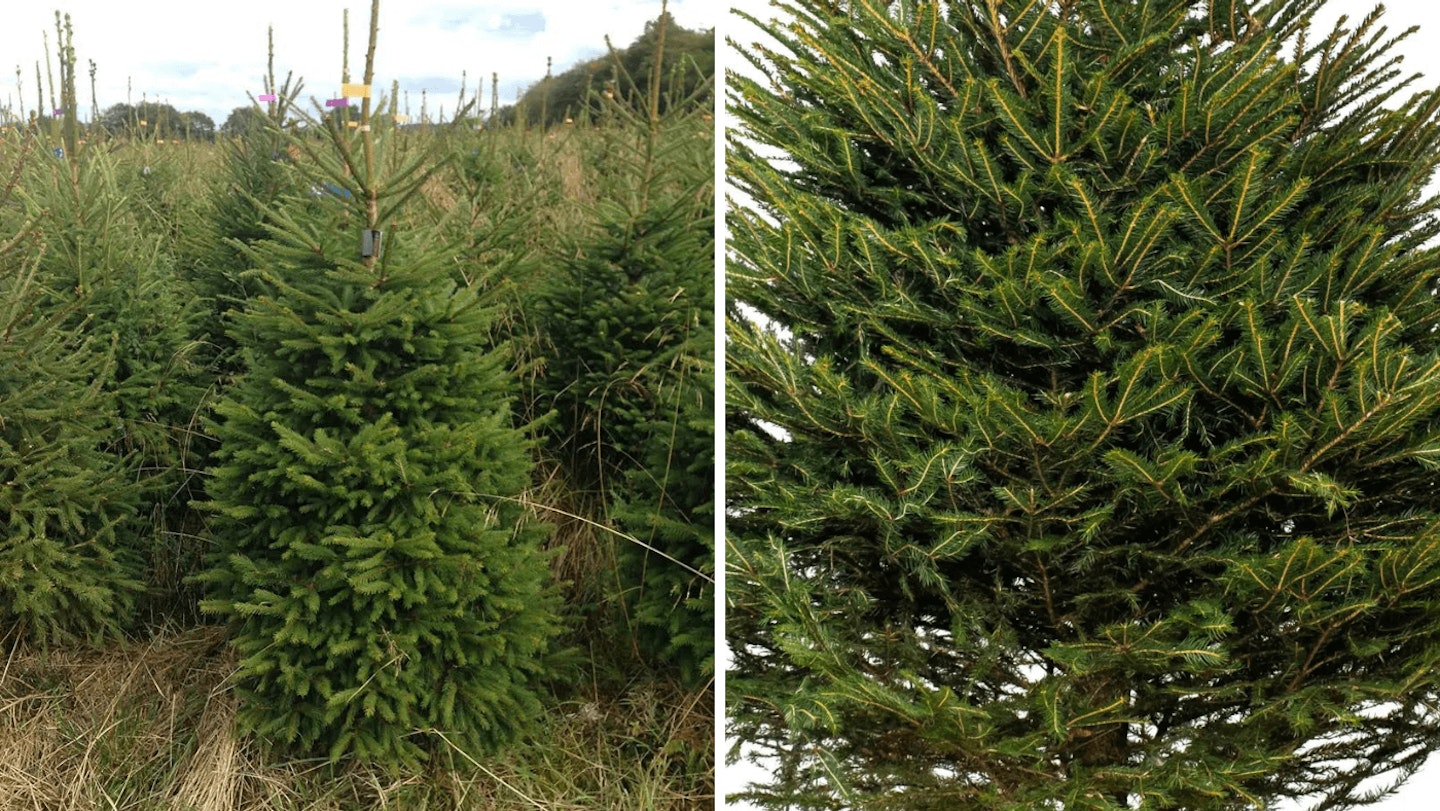
If you close your eyes and imagine a Christmas tree, you’re probably picturing a Norway Spruce. Known as the traditional Christmas tree, it has an unmistakable scent that fills the room with a festive aroma. The Norway Spruce is an excellent choice as an outdoor tree, or if you like to put your tree up indoors after 10 December, just in time for Christmas.
The Norway Spruce boasts a classic conical shape with short, bushy branches. A warm, deep forest green, this tree is the perfect canvas for even the most gaudy lights and baubles. It’s even fuller at the bottom with no gaps to the trunk.
As the name would suggest, the Norway Spruce originated in Scandinavia and was used for timber thanks to its strength. But during the Victorian era, Prince Albert popularised an old German tradition of decorating a tree for Christmas by adding lights to a Norway Spruce. Soon, the trend had spread all over Europe. Even today, Oslo sends the gift of a Norway Spruce to London’s Trafalgar Square, in gratitude for our help during the Second World War.
The Norway Spruce is known for its aroma, infusing every corner of your home with that typical pine scent of a true Christmas tree. The needles are fresh, fragrant, and slightly spikier, they do tend to drop throughout the season.
Why choose a real tree over a fake one?
More environmentally friendly
Many people consider artificial trees to be more environmentally friendly than a genuine one, and you’d be forgiven for thinking so.
According to The Carbon Trust, you’d have to use an artificial tree for at least 10 years in order to have the same level of carbon footprint as a real Christmas tree. Artificial trees are often made from plastic and are imported.
Despite popular belief, a real tree actually is better for the environment. Most of trees are purposely planted for the occasion, on purpose-built farms. This means that they’re grown safely and are not ripped out of a forest, as you might imagine. Also as they are growing they actually remove carbon from the atmosphere.
What’s more, authentic pines are 100 per cent recyclable. They’re also not going to cause any harmful greenhouse gas emissions, meaning all in all the level of carbon dioxide emissions will be much lower.
Beautiful and fragrant
Christmas is one of the most beautiful times of the year and trees are one of the most beautiful artefacts of nature. A real tree allows you to bring the beauty of the natural world into your home, and the smell of a real tree is something you can’t beat. Choosing your own tree to decorate at home is a great way to enjoy the festive season, and is all part of the magic of Christmas.

The best types of Christmas trees for retaining needles
If you’re looking for a tree with great needle retention then you’ll want to opt for the Nordman fir or Fraser Fir, and avoid the Norway Spruce. Follow the tips below to keep your tree alive for longer.
Cut the base
When you first get your tree make sure that you saw a few inches from the base. It’s important to do this because when the tree is initially cut sap forms to protect the area where the cut has taken place (you can think of it as a bit like a scab on the human body), this sap can prevent the tree from soaking up water, so taking a few cms will allow the tree to take up water more easily.
Purchase a tree stand with a water reservoir
Some people will choose to place their cut Christmas tree inside a bucket filled with soil, however as the tree has no roots this will prevent it from getting the water that it requires. So it’s important you purchase a Christmas tree stand with your tree which is specially designed to not only hold your tree in place, but it also holds water which keeps the tree hydrated.
Keep your tree away from direct heat
Make sure to keep your tree topped up with water and keep it away from direct heat including radiators and avoid rooms with underfloor heating.
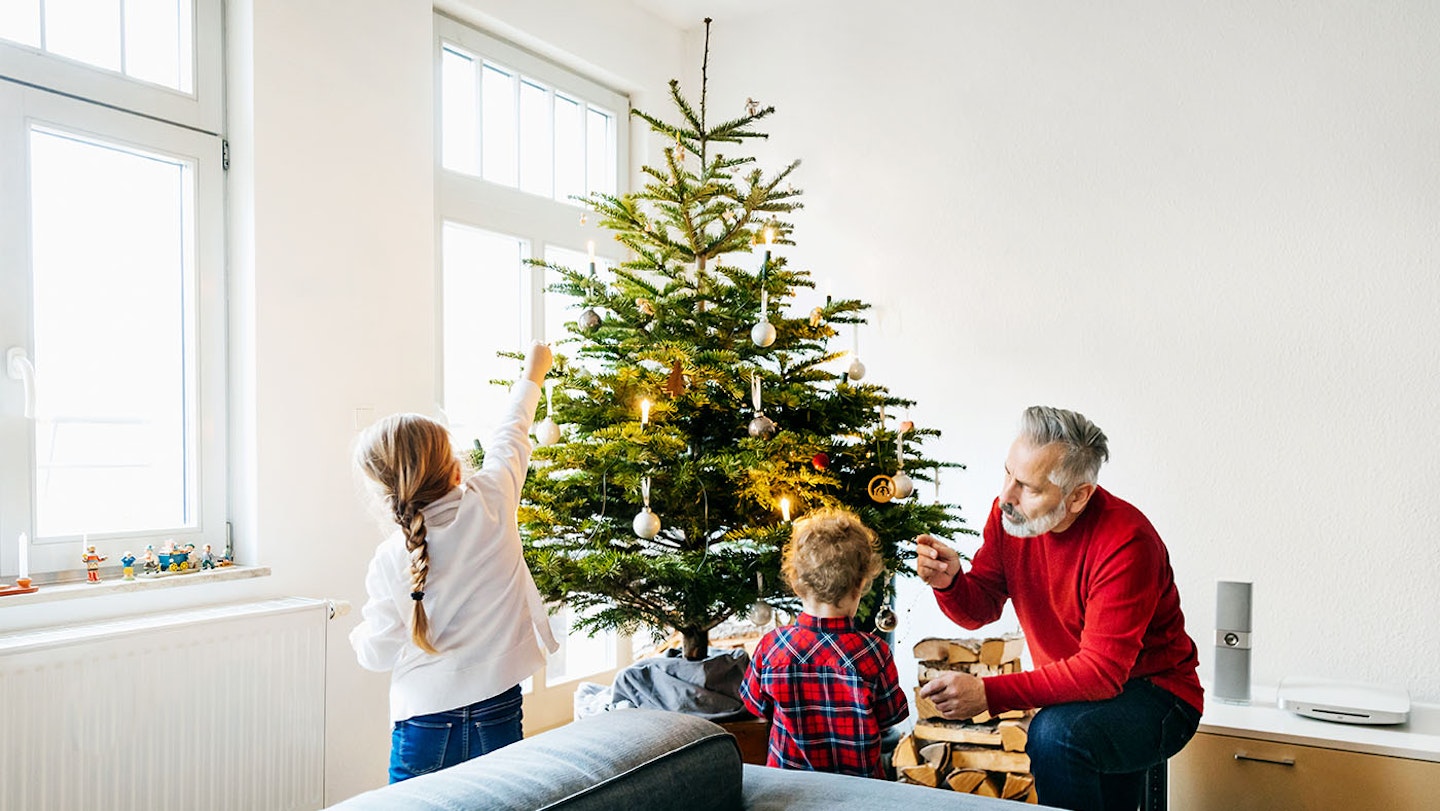
The best types of Christmas trees for fragrance
The trees with the best fragrance are the Fraser Fir and Korean Fir. If the scent is something you care about then avoid the Nordmann Fir, as it is almost scentless.
Can I plant my tree outside?
If you want a tree that you can plant outside then you’ll want to opt for a pot-grown tree. These are trees grown in the pot they are sold in. Because the trees have a root system they can be kept or replanted again after the festive period.
Could I have a Christmas tree allergy?
If you've noticed that you seem to have cold or flu symptoms around the time your Christmas tree appears, it's entirely possible that you may have a Christmas tree allergy.
For beautiful, long-lasting trees that are delivered fresh to your door at your convenience, visit christmastrees.co.uk.
